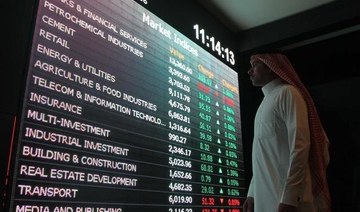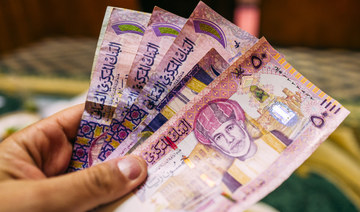SAN FRANCISCO: A Lenovo smartphone unveiled recently will be clever enough to grasp your physical surroundings — such as the room’s size and the presence of other people — and potentially transform how we interact with e-commerce, education and gaming.
Today’s smartphones track location through GPS and cell towers, but that does little more than tell apps where you are. Tapping Google’s 3-year-old Project Tango , the new Phab2 Pro phone will use software and sensors to track motions and map building interiors, including the location of doors and windows.
That’s a crucial step in the promising new frontier in “augmented reality,” or the digital projection of lifelike images and data into a real-life environment.
If Tango fulfills its promise, furniture shoppers will be able use the Phab2 Pro to download digital models of couches, chairs and coffee tables to see how they would look in their actual living rooms. Children studying the Mesozoic Era would be able to place a virtual Tyrannosaurus or Velociraptor in their home or classroom — and even take selfies with one. The technology would even know when to display information about an artist or a scene depicted in a painting as you stroll through a museum.
Tango will be able to create internal maps of homes and offices on the fly. Google won’t need to build a mapping database ahead of time, as it does with existing services like Google Maps and Street View. Nonetheless, Tango could raise fresh concerns about privacy if controls aren’t stringent enough to prevent the on-the-fly maps from being shared with unauthorized apps or heisted by hackers.
Lenovo says the Phab2 Pro will sell for $500 when it begins shipping in the US in August. The device is expected to be available throughout the world by mid-September, in advance of Apple’s anticipated release of the iPhone 7.
In another effort to put a new twist on smartphones, Lenovo also previewed the newest models in its Moto line, which it bought from Google two years ago.
The Moto Z and Moto Z Force will both let people snap on additional equipment called “Mods” to the back of the phones. The initial Mods include a speaker to amplify music, a projector for displaying photos and video from the phone and a power pack that provides 22 hours of additional battery. The phones will be available exclusively in the US through Verizon this summer before a global release in the fall.
The new phones are coming out as phone sales are slowing. People have been holding off on upgrades, partly because they haven’t gotten excited about the types of technological advances hitting the market during the past few years. Phones offering intriguing new technology such as Tango could help spur more sales.
But Tango’s room-mapping technology is probably still too abstract to gain mass appeal right away, says Ramon Llamas, an analyst at the IDC research group.
“For most folks, this is still a couple steps ahead of what they can wrap their brains around, so I think there’s going to be a long gestation period,” Llamas says.
Other smartphones promising quantum leaps have flopped. Remember Amazon’s Fire phone released with great fanfare two years ago? That souped-up phone featured four front-facing cameras and a gyroscope so some images could be seen in three dimensions. The device also offered a tool called Firefly that could be used to identify objects and sounds. But the Fire fizzled, and Amazon no longer even sells the phone.
The Phab2 Pro also looks impressive, with a 6.4-inch display screen and four cameras to help perform its wizardry. Lenovo boasts the phone’s sensors can capture about 250,000 measurements per second.
Despite all the fancy hardware, the key to the Tango phone’s success is likely to hinge on the breadth of compelling apps that people find useful in their everyday lives.
Google previously released experimental Tango devices designed for computer programmers, spurring them to build about 100 apps that should work with the Phab2 Pro. Home improvement retailer Lowe’s is releasing an app that enables Phab2 Pro users to measure spaces with the phone and test how digital replicas of appliances and other decor would look around a house.
Both large and small tech companies are betting that augmented reality, or AR , will take off sooner than later. Microsoft has been selling a $3,000 prototype of its HoloLens AR headset. Others, such as Facebook’s Oculus and Samsung, are out with virtual reality, or VR, devices. Google has one coming as well through its Daydream project. While AR tries to blend the artificial with your actual surroundings, VR immerses its users in a setting that’s entirely fabricated.
The AR and VR devices out so far invariably require users to wear a headset or glasses. In many cases, they also must be tethered to more powerful personal computers, restricting the ability to move around.
None of that is necessary with the Phab2 Pro. Instead, you get an augmented look at your surroundings through the phone’s screen.
“This has a chance to become pervasive because it’s integrated into a device that you already have with you all the time,” says Jeff Meredith, a Lenovo vice president who oversaw development of the Tango device. “You aren’t going to have to walk around a mall wearing a headset.”
Lenovo, Google unveil phone that knows its way around a room
Lenovo, Google unveil phone that knows its way around a room

Closing bell: Saudi main index slips to close at 11,850

RIYADH: Saudi Arabia’s Tadawul All Share Index slipped on Sunday, losing 145.35 points, or 1.21 percent, to close at 11,850.64.
The total trading turnover of the benchmark index was SR4.37 billion ($1.16 billion) as 55 of the stocks advanced, while 166 retreated.
Similarly, the Kingdom’s parallel market Nomu slipped 41.38 points, or 0.16 percent, to close at 26,638.19. This comes as 26 of the listed stocks advanced while 33 retreated.
Meanwhile, the MSCI Tadawul Index slipped 20.47 points, or 1.37 percent, to close at 1,473.08.
The best-performing stock of the day was Bupa Arabia for Cooperative Insurance Co. The firm’s share price surged 4.79 percent to SR240.80.
Other top performers include Saudi Fisheries Co. as well as National Medical Care Co.
The worst performer was Al-Baha Investment and Development Co. whose share price dropped by 7.14 percent to SR0.13.
Other worst performers were Electrical Industries Co. as well as Saudi Arabian Mining Co.
On the announcements front, East Pipes Integrated Co. has announced its annual financial results for the period ending on March 31.
According to a Tadawul statement, the company’s net profit hit SR267 million in the year ending in March 2024, reflecting a 167 percent surge when compared to the corresponding period a year earlier.
The increase is mainly due to a sustained rise in average sales prices as well as a decrease in the cost of production per tonne.
Moreover, Saudi Ground Services Co. has announced that the board of directors has approved establishing a 100 percent owned new subsidiary as a limited liability company in Saudi Arabia under the name “Ground Service Co. for Travel and Tourism Services.”
A bourse filing revealed that the new subsidiary will have a share capital of SR500,000.
This decision comes after meeting the requirements set by the relevant authorities and regulations for operating travel agency services and air transport procedures, which are in line with the National Economic Activities Classification Guide, following the necessary approvals from the authorities.
This step aligns with the strategic direction of Saudi Ground Services Co., aiming for growth, business development, and diversification of its revenues.
Furthermore, MBC FZ-LLC, a subsidiary wholly owned by MBC Group, has announced the signing of a production contract worth SR65 million with MedYapim Middle East Audiovisual Media Production Co., a related party, for the production of a television series.
The contract is expected to be completed by February 2025, in accordance with the terms and conditions of the agreement and is projected to have a positive impact on the firm’s financial statements of 2025.
DP World, Mawani launch $250m logistics park project at Jeddah Islamic Port
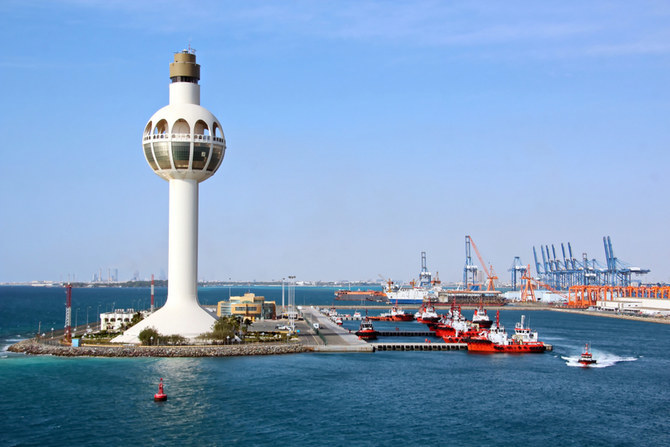
RIYADH: The Saudi logistics sector is poised for growth with DP World’s investment of SR900 million ($250 million) to build a distribution center at the Jeddah Islamic Port.
With this strategic move, the UAE multinational logistics company will also enhance its operational capabilities, providing more efficient and comprehensive services to its clients.
Sunday’s announcement signals the start of construction on the quarter-billion-dollar project, which will be developed in two phases and is scheduled to open in the second quarter of 2025.
The park offers an in-land container depot with a handling capacity of 250,000 twenty-foot equivalent units and warehouse space of 100,000 sq. meters, said a press release.
Integrated with the recently awarded 30-year concession for the South Container Terminal, the state-of-the-art facility will bolster trade to enable Saudi Arabia’s strategy to become an economic powerhouse by 2030.
In June 2022, DP World and the Saudi Ports Authority, known as Mawani, signed a 30-year agreement, with an investment exceeding SR500 million, to construct a cutting-edge, port-centric logistics park in Jeddah.
The deal aims to develop the park, covering 415,000 sq. meters, featuring an in-land container depot capable of accommodating around 250,000 TEU and warehousing storage space totaling 100,000 sq. meters. Potential expansions could raise the storage capacity to 200,000 sq. meters.
The agreement was signed under the patronage of Saudi Minister of Transport and Logistic Services Saleh Al-Jasser, who is also chairman of the board of Saudi Ports Authority,
According to a statement from the Dubai government’s media office, the 415,000 sq. meter greenfield facility will include 185,000 sq. meters of warehousing space and a vast multi-purpose storage yard, establishing it as the largest integrated logistics park in the Kingdom.
The statement further mentioned that the park will accommodate over 390,000 pallet positions, providing customers with an efficient platform for the smooth movement of goods to and from Jeddah.
The collaboration between Mawani and DP World also includes the management of the South Container Terminal through a separate 30-year concession signed in 2020, the media office said in its release.
It added that the terminal is currently in the final phase of a comprehensive modernization project, scheduled for completion in the last quarter of 2024. This project will ramp up the handling capacity to 5 million TEU.
“Saudi Arabia has always been a deeply important market for DP World, and this milestone represents our ongoing commitment to the Kingdom,” Sultan Ahmed bin Sulayem, chairman and CEO of DP World, said.
He added that Jeddah Logistics Park, strategically located on the vital Asia-Europe shipping route, will provide world-class multimodal connectivity and market access for customers while supporting the ambitious aims of Saudi Vision 2030.
“This investment marks a significant step as we mark 25 years of operations in Jeddah and underscores our enduring commitment to facilitating the flow of trade,” Sulayem added.
On the other hand, Mawani President Omar bin Talal Hariri highlighted that this new logistics area will be connected to DP World’s South Container Terminal at Jeddah Islamic Port, facilitating growth and increasing the number of containers handled at the terminal.
“The project is part of Mawani’s broader efforts to expand the number of logistics centers in Saudi ports, in partnership with major national and international companies, and in line with the objectives of the National Transport and Logistics Strategy and Vision 2030,” Hariri said.
King Khalid International tops Saudi airport rankings with 82% compliance rate: GACA report
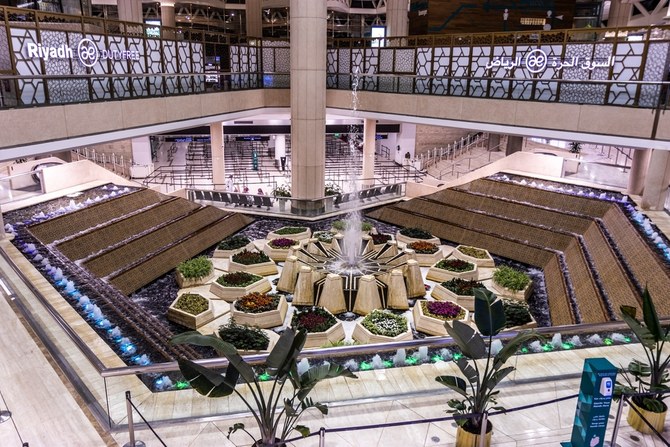
RIYADH: Saudi Arabia’s King Khalid International Airport emerges as one of the top three performing terminals in the Kingdom, according to official data.
The Riyadh-based aviation facility topped the category for international terminals with over 15 million passengers annually, achieving an 82 percent compliance rate with the General Authority of Civil Aviation’s standards.
In its monthly report for April, GAC outlined the performance of the country’s airports, highlighting King Fahd International Airport and Abha International Airport as premier travel hubs.
Based on 11 key criteria, the evaluation aims to improve service quality and enhance the passenger experience.
King Abdulaziz International Airport in Jeddah came second with the same commitment rate but was outperformed by King Khalid International in meeting the criteria.
King Fahd International Airport led the category for international airports with 5 to 15 million passengers annually, also with a 91 percent commitment rate. Prince Mohammad bin Abdulaziz International Airport in Madinah, which had the same commitment rate, was second.
In the category of international airports with 2 to 5 million passengers annually, Abha International Airport secured the top spot with a 100 percent commitment rate, outperforming King Abdullah bin Abdulaziz Airport in Jazan, which also had a 100 percent commitment rate but lagged in meeting the criteria.
Al-Qaisumah International Airport ranked first among international terminals with fewer than 2 million passengers annually, with a 100 percent commitment rate, excelling in average waiting times for departure and arrival flights.
Arar Airport achieved the highest performance among domestic terminals, with a 100 percent commitment rate, leading in average waiting times for departure and arrival flights.
GACA’s performance evaluation is based on essential criteria such as passenger waiting times, time spent at baggage claim, and passport and customs areas, alongside standards related to accessibility for persons with disabilities and other global best practices.
In an additional report released earlier in April, GACA revealed that the volume of air cargo handled by airports in the Kingdom saw an annual rise of 7 percent in 2023 to reach 918,000 tonnes.
The analysis stated that the Kingdom’s aviation sector strongly rebounded in 2023, with airports witnessing a 26 percent rise in passenger transportation compared to 2022.
GACA said that flight facilities in Saudi Arabia transported 112 million passengers last year, an 8 percent increase compared to 2019.
The report revealed that the number of flights through the Kingdom’s airports in 2023 reached about 815,000, an increase of 16 percent compared to 2022.
In 2023, airports in Saudi Arabia handled 394,000 international and 421,000 domestic journeys, the authority added.
SME financing in Saudi Arabia surges 20.4% in Q4 of 2023
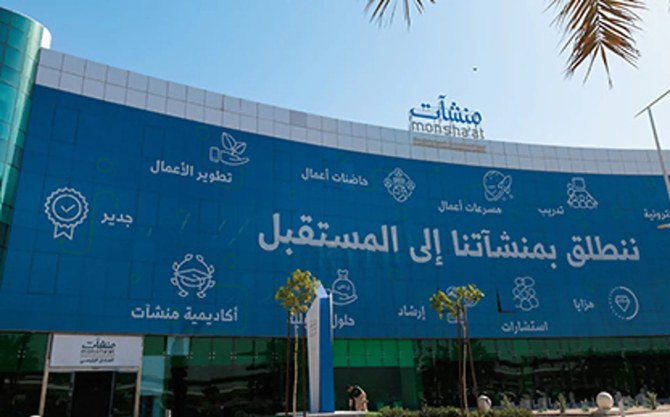
RIYADH: Financing provided to small and medium enterprises in Saudi Arabia surged by 20.4 percent year on year to $73.5 billion in the fourth quarter of 2023, official data showed.
In its latest quarterly report, the Kingdom’s Small and Medium Enterprises General Authority said that credit facilities provided to micro and SMEs amounted to $6.7 billion and $24.6 billion, respectively, in the last three months of 2023.
On the other hand, medium enterprises in the Kingdom secured finance worth $42.2 billion in the last quarter of the previous year.
The authority, also known as Monsha’at revealed that banks in Saudi Arabia provided credit facilities worth $68.9 billion in the fourth quarter of 2023, representing a rise of 21.1 percent compared to the same period of the previous year.
On the other hand, finance companies in the Kingdom provided loans amounting to $4.6 billion in the last three months of 2023, marking a year-on-year rise of 9.3 percent.
Developing the SME sector is crucial for Saudi Arabia as the Kingdom is currently on a path of economic diversification, as it steadily reduces its dependency on oil.
The report revealed that 9,644 SMEs were benefitted from Monsha’at support centers in the first quarter of this year.
Moreover, three SMEs had their initial public offering on the parallel market Nomu through the Tomoh program in the first quarter of 2024.
Monsha’at also revealed that Saudi Arabia led venture capital funding in the Middle East and North Africa region with $240 million deployed across 35 deals in the first quarter of this year.
“With $240 million deployed across 35 deals to Saudi-based companies, the Kingdom accounted for a remarkable 65 percent of all VC funding in the region,” said the authority.
The report attributed 54 percent of this VC funding to the $130 million pre-initial public offering secured by Salla in March.
“While the $240 million invested in the first quarter maintains the Kingdom’s dominance, it did reflect a considerable quarterly drop of 70 percent from the fourth quarter of 2023, along with a 42 percent year-on-year drop. This downturn mirrors the broader trend across the MENA landscape,” said Philip Bahoshy, founder and CEO of venture capital data platform MAGNiTT.
He added: “Digging deeper, it becomes evident that while the overall funding has diminished, the Kingdom’s entrepreneurial ecosystem continues to attract investors.”
Oman’s banking sector sees 2.9% rise in credit to $80bn by end of March
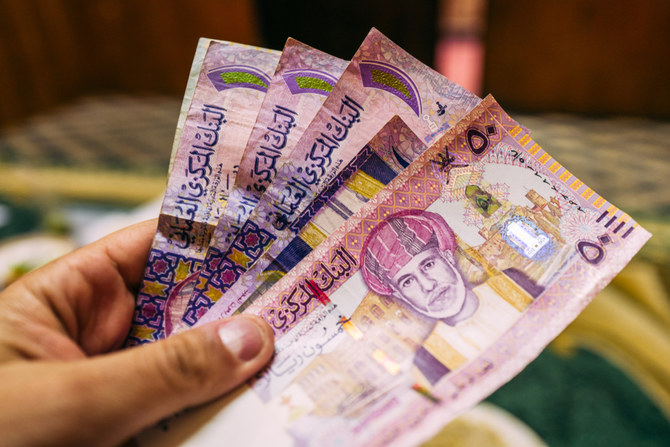
RIYADH: Oman’s banking sector experienced a 2.9 percent rise in total credit, reaching 30.8 billion Omani rials ($80 billion) by the end of March, official data showed.
In its monthly review of banking and monetary developments, the Central Bank of Oman disclosed that credit to the private sector rose by 3.6 percent year-on-year, reaching 25.9 billion rials by the end of March.
Non-financial corporations held the largest share of the total private sector credit, accounting for approximately 45.4 percent by the end of March, followed closely by households at 45 percent.
Financial corporations constituted 5.8 percent of the total, while the remaining 3.8 percent was allocated to other sectors.
Total deposits held with other depository corporations witnessed a significant year-on-year growth of 11.7 percent, reaching 30.3 billion rials at the end of March, while total private sector deposits grew by 13.7 percent to 20.2 billion rials.
The increase in private sector credit and deposits reflects robust economic activity and confidence in the financial system.
Regarding the sector-wise composition of private sector deposits, household holdings contributed the most at 49.8 percent, followed by non-financial corporations at 30.9 percent, financial corporations at 16.5 percent, and other sectors at 2.8 percent.
The combined balance sheet of conventional banks showed a year-on-year growth of 0.8 percent in total outstanding credit as of the end of March.
Credit to the private sector increased by 1.6 percent, reaching 20.3 billion rials, while overall investments in securities surged by 28.0 percent to 5.7 billion rials.
Investment in government development bonds decreased by 17.1 percent to 1.8 billion rials, while investments in foreign securities saw a dramatic increase of 139.0 percent to 2.3 billion rials.
Moreover, aggregate deposits in conventional banks experienced significant growth, while government deposits declined. Public enterprise holdings increased substantially, and private sector deposits rose.
Simultaneously, Islamic banks and windows witnessed notable growth in total assets, financing, and deposits, underscoring their expanding role within the banking system.
The report further highlighted that the nation’s nominal gross domestic product declined by 2.8 percent at the end of the fourth quarter of 2023, primarily due to a significant drop in the hydrocarbon sector despite growth in the non-hydrocarbon sector.
However, real GDP increased by 1.3 percent during the same period. Both the average oil price and daily production saw decreases, while inflation remained minimal.


